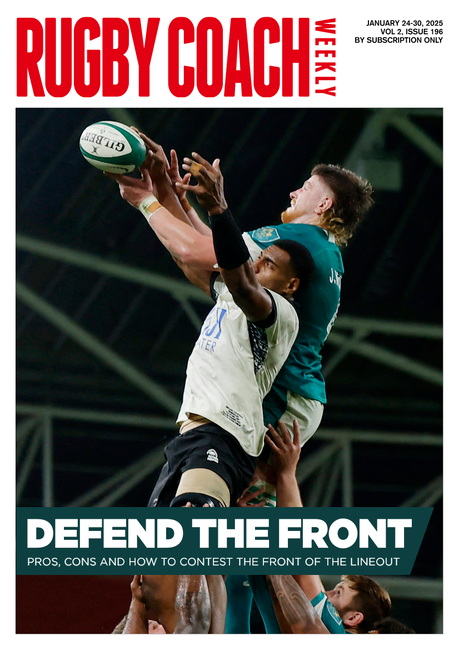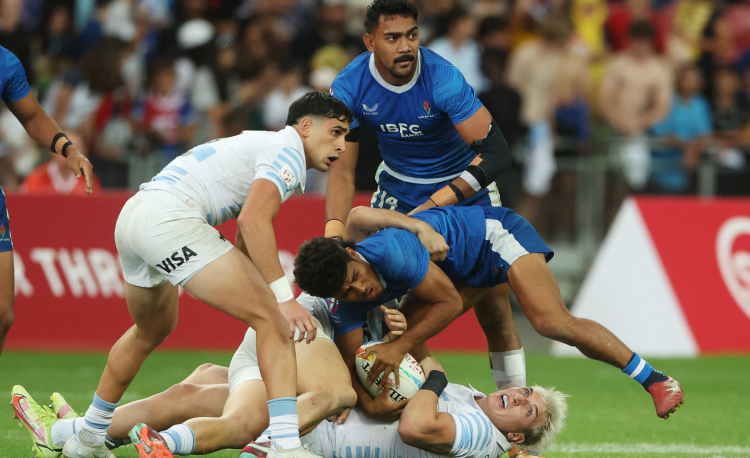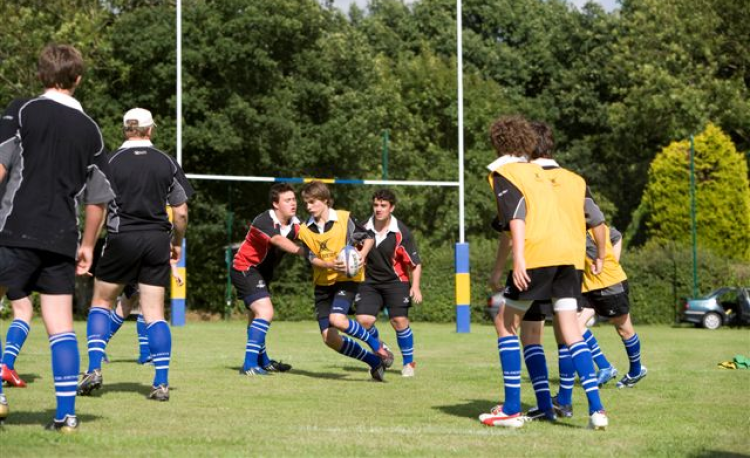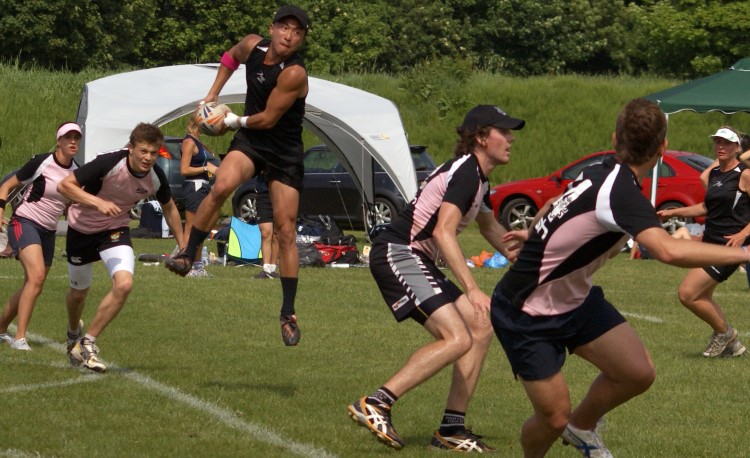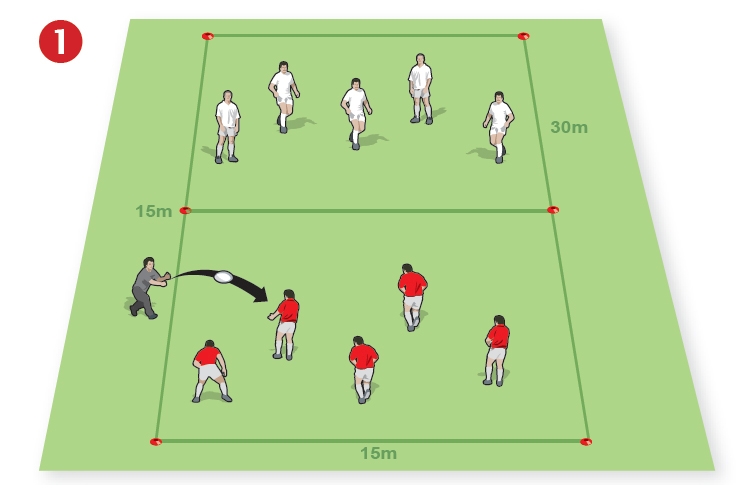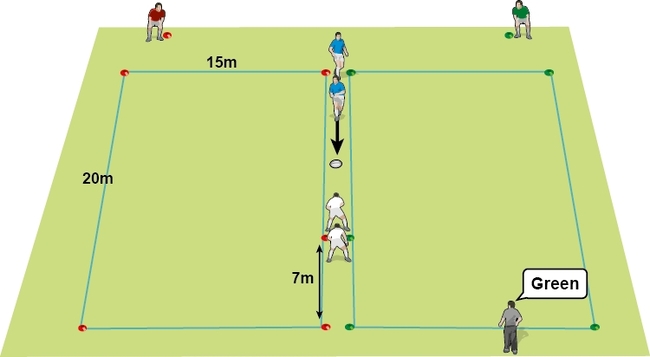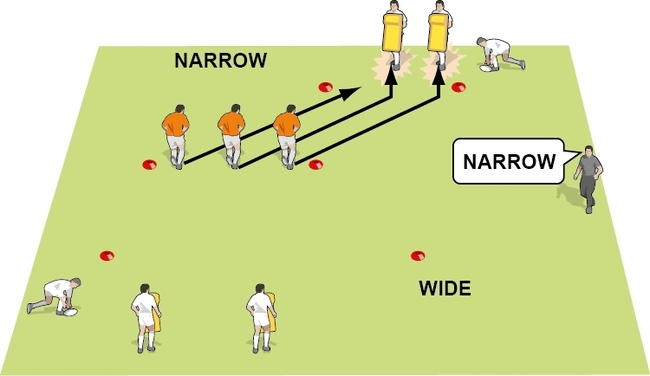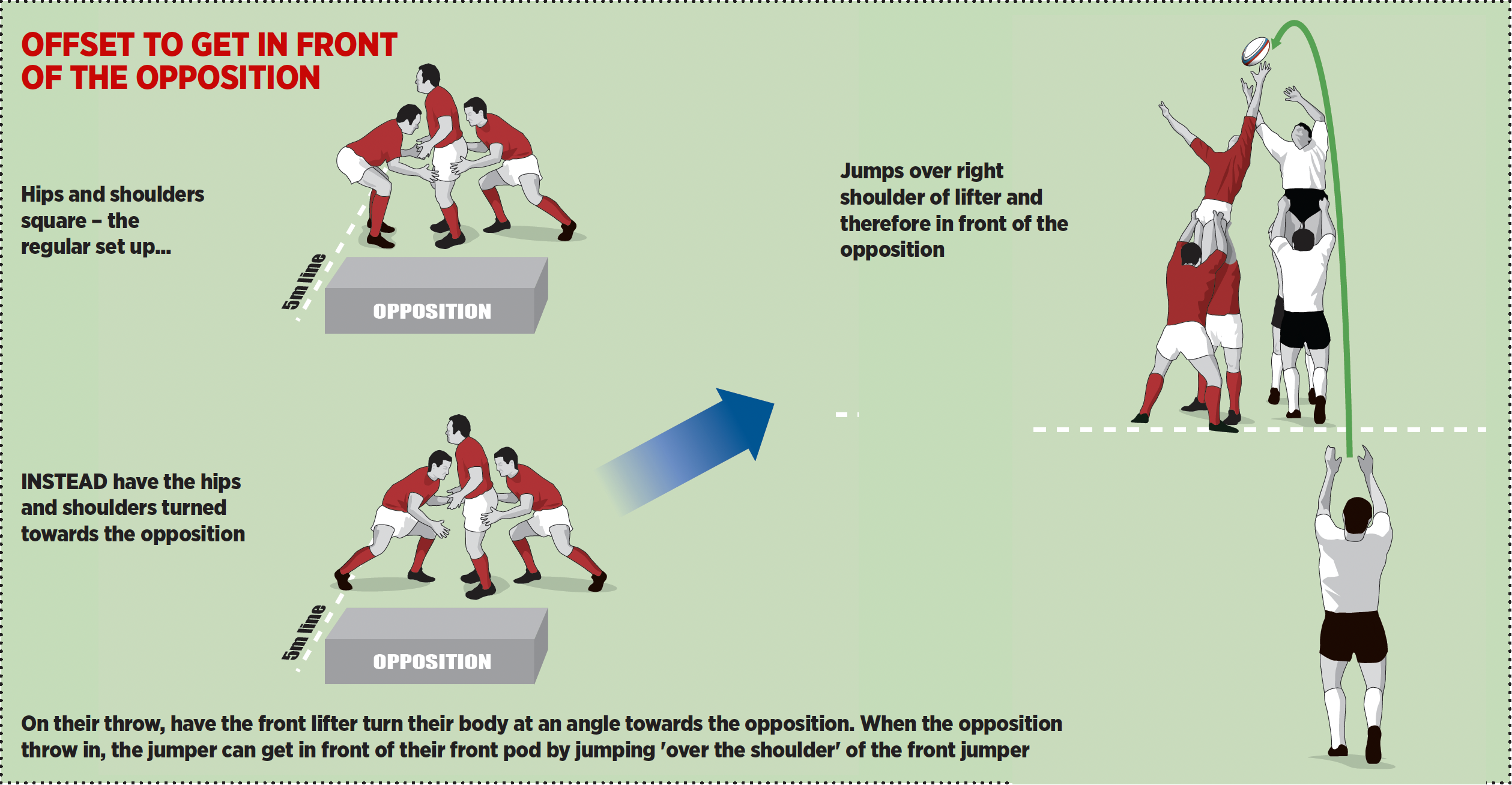The best sevens attack
Touch Tag Sevensby Dan Cottrell
Among other achievements Mike Friday took England sevens to back-to-back wins in the Dubai Sevens, a record four successive wins in the Hong Kong Sevens, a Commonwealth silver medal in 2006, and second place behind the All Blacks in the IRB sevens rankings. We look at the way he achieved this.
Basic principles
1. Give the fast man space to run around defender.
2. Any three on three situation should be seen as a chance to beat the defence.
3. Otherwise pull the defence to one side and then attack quickly the other way, normally from a breakdown or lineout.
Create space out wide
There is a principle in sevens that a good way to create gaps is to spread the attackers out, from touchline to touchline. Against a team that is defending with six players in their front line and a sweeper (as described in the Better Rugby Coaching article "3 Man, Sweeper, Chain and Arc for 7s Defence"), then gaps will surely appear.
This is not the way that Mike likes to play the game. He gives two very good reasons:
1. A winger will normally prefer to beat the man with space on the outside, especially if he thinks he is faster than his opposite man.
2. Shorter passes are quicker passes. Most players prefer to pass shorter, especially off their weaker hands.
From attacking lineouts and rucks Mike suggests that players squeeze up a little more to give the winger a chance to run wide. And when he means run, he means head down, arc out and go for it.

Three on three: line break
From scrums, look to score from a line break. In sevens, the defence outside the scrum will be a three on three. Mike sees any 3 v 3 as a opportunity to break the line. First the ball carrier must use good footwork, a change of pace, or a change of angle to draw a defender out of position. Then a quick pass to create a 2 v 1 and a chance for a line break.
Mike therefore suggests doing lots of work on 2 v 2s and 3 v 3s to give your players the confidence to take out the opposition.
Pull the defence
Where the defence is more organised, the aim of the attack is to pull the defence to one side of the pitch and then pass the ball quickly back the other way. With your winger standing further infield than normal, as soon as he receives the ball, he has the chance to "pin back his ears" and beat his opposite man.
There are two elements to this simple movement.
Element 1: After passing the ball each player must move in and behind the person they have passed to. Sometimes known as the "post" or "pocket" position.
Element 2: If and when the winger finds he cannot beat his opposite man, he must STOP. Amazingly, but only momentarily, the defender will often also stop. The winger can then pass the ball back into the post position, so the ball is moved away very quickly.
The defence should have been moved around enough for spaces to open up, either close to the ball, in the middle or further out. The key, though, is that all these passes must be to the next man - make sure there are no miss passes.

Basic principles
1. Give the fast man space to run around defender.
2. Any three on three situation should be seen as a chance to beat the defence.
3. Otherwise pull the defence to one side and then attack quickly the other way, normally from a breakdown or lineout.
Create space out wide
There is a principle in sevens that a good way to create gaps is to spread the attackers out, from touchline to touchline. Against a team that is defending with six players in their front line and a sweeper (as described in the Better Rugby Coaching article "3 Man, Sweeper, Chain and Arc for 7s Defence"), then gaps will surely appear.
This is not the way that Mike likes to play the game. He gives two very good reasons:
1. A winger will normally prefer to beat the man with space on the outside, especially if he thinks he is faster than his opposite man.
2. Shorter passes are quicker passes. Most players prefer to pass shorter, especially off their weaker hands.
From attacking lineouts and rucks Mike suggests that players squeeze up a little more to give the winger a chance to run wide. And when he means run, he means head down, arc out and go for it.

Three on three: line break
From scrums, look to score from a line break. In sevens, the defence outside the scrum will be a three on three. Mike sees any 3 v 3 as a opportunity to break the line. First the ball carrier must use good footwork, a change of pace, or a change of angle to draw a defender out of position. Then a quick pass to create a 2 v 1 and a chance for a line break.
Mike therefore suggests doing lots of work on 2 v 2s and 3 v 3s to give your players the confidence to take out the opposition.
Pull the defence
Where the defence is more organised, the aim of the attack is to pull the defence to one side of the pitch and then pass the ball quickly back the other way. With your winger standing further infield than normal, as soon as he receives the ball, he has the chance to "pin back his ears" and beat his opposite man.
There are two elements to this simple movement.
Element 1: After passing the ball each player must move in and behind the person they have passed to. Sometimes known as the "post" or "pocket" position.
Element 2: If and when the winger finds he cannot beat his opposite man, he must STOP. Amazingly, but only momentarily, the defender will often also stop. The winger can then pass the ball back into the post position, so the ball is moved away very quickly.
The defence should have been moved around enough for spaces to open up, either close to the ball, in the middle or further out. The key, though, is that all these passes must be to the next man - make sure there are no miss passes.

Newsletter Sign Up
Coaches Testimonials

Gerald Kearney, Downtown Las Vegas Soccer Club

Paul Butler, Florida, USA

Rick Shields, Springboro, USA

Tony Green, Pierrefonds Titans, Quebec, Canada
Subscribe Today
Be a more effective, more successful rugby coach
In a recent survey 89% of subscribers said Rugby Coach Weekly makes them more confident, 91% said Rugby Coach Weekly makes them a more effective coach and 93% said Rugby Coach Weekly makes them more inspired.
Get Weekly Inspiration
All the latest techniques and approaches
Rugby Coach Weekly offers proven and easy to use rugby drills, coaching sessions, practice plans, small-sided games, warm-ups, training tips and advice.
We've been at the cutting edge of rugby coaching since we launched in 2005, creating resources for the grassroots youth coach, following best practice from around the world and insights from the professional game.


